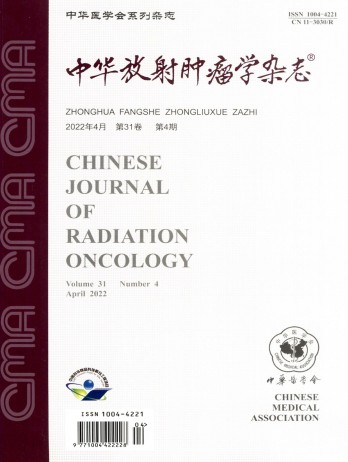高危因素结合分层分析预测N2-3M0鼻咽癌患者临床预后的临床价值分析
引用次数: 0
摘要
目的评价高危因素结合分层方法预测N2-3M0鼻咽癌患者临床预后的临床价值。方法纳入2013年11月至2015年5月接受IMRT治疗的226例N2-3M0鼻咽癌患者。分析肿瘤体积、颈部转移淋巴结特点(坏死和融合)与T、N分期的关系。确定了影响生存的高危因素。评估高危因素结合分层方法预测临床预后的价值。结果N3分期、Vn≥47.15cm3和淋巴结融合是N2-3M0期鼻咽癌远处转移的高危因素。根据高危因素将所有患者分为低危、中危、高危和极高危组。对于低风险、中风险、高风险和极高风险组的患者,3年总生存率分别为84.2%、76.7%、58.7%和36.4%(均<0.001),无远处转移生存率(DMFS)分别为87.3%、85.2%、54.5%和12.1%(均<0.0001),无进展生存率(PFS)分别为76.8%、74.3%、49.2%和12.1%,局部无复发生存率(LRRFS)分别为91.5%和88.3%(P=0.914)。与Vn、N分期和LNF分类组相比,DMFS的风险分层方法显示出最佳的曲线分离(均P<0.05)。结论高危因素与分层方法相结合在预测N2-3M0鼻咽癌患者的临床预后方面具有最高的临床价值。关键词:鼻咽肿瘤;结合分层方法的高危因素;临床价值本文章由计算机程序翻译,如有差异,请以英文原文为准。
Analysis of clinical value of high-risk factors combined with stratification analysis in predicting clinical prognosis of N2-3M0 nasopharyngeal carcinoma patients
Objective
To evaluate the clinical value of high-risk factors in combination with stratification method in predicting the clinical prognosis of patients diagnosed with N2-3M0 nasopharyngeal carcinoma (NPC).
Methods
A total of 226 N2-3M0 NPC patients who underwent IMRT from November 2013 to May 2015 were enrolled in this study. The relationship between tumor volume, cervical metastatic lymph node characteristics (necrosis and fusion) and T and N staging was analyzed. The high-risk factors that affected the survival were identified. The value of high-risk factors combined with stratification method in predicting the clinical prognosis was assessed.
Results
N3 staging, Vn≥47.15cm3 and lymph node fusion (LNF) were the high-risk factors for distant metastasis in patients with stage N2-3M0 NPC. All patients were classified into the low-risk, medium-risk, high-risk and extremely high-risk groups according to high-risk factors. For patients in the low-risk, medium-risk, high-risk and extremely high-risk groups, the 3-year overall survival rates were 84.2%, 76.7%, 58.7% and 36.4%(all P<0.001), 87.3%, 85.2%, 54.5% and 12.1% for the distant metastasis-free survival (DMFS) rates (all P<0.001), 76.8%, 74.3%, 49.2% and 12.1%for the progression-free survival (PFS) rates (all P<0.001), and 89.2%, 88.5%, 91.5% and 88.3% for the loco-regional recurrence-free survival (LRRFS) rates (P=0.914), respectively. The risk stratification method showed the best curve separation for DMFS compared to the Vn, N staging and LNF classification groups (all P<0.05).
Conclusion
High-risk factors in combination with stratification method has the highest clinical value in predicting the clinical prognosis of N2-3M0 NPC patients.
Key words:
Nasopharyngeal neoplasm; High-risk factors combined with stratification method; Clinical value
求助全文
通过发布文献求助,成功后即可免费获取论文全文。
去求助
来源期刊
自引率
0.00%
发文量
6375
期刊介绍:
The Chinese Journal of Radiation Oncology is a national academic journal sponsored by the Chinese Medical Association. It was founded in 1992 and the title was written by Chen Minzhang, the former Minister of Health. Its predecessor was the Chinese Journal of Radiation Oncology, which was founded in 1987. The journal is an authoritative journal in the field of radiation oncology in my country. It focuses on clinical tumor radiotherapy, tumor radiation physics, tumor radiation biology, and thermal therapy. Its main readers are middle and senior clinical doctors and scientific researchers. It is now a monthly journal with a large 16-page format and 80 pages of text. For many years, it has adhered to the principle of combining theory with practice and combining improvement with popularization. It now has columns such as monographs, head and neck tumors (monographs), chest tumors (monographs), abdominal tumors (monographs), physics, technology, biology (monographs), reviews, and investigations and research.

 求助内容:
求助内容: 应助结果提醒方式:
应助结果提醒方式:


